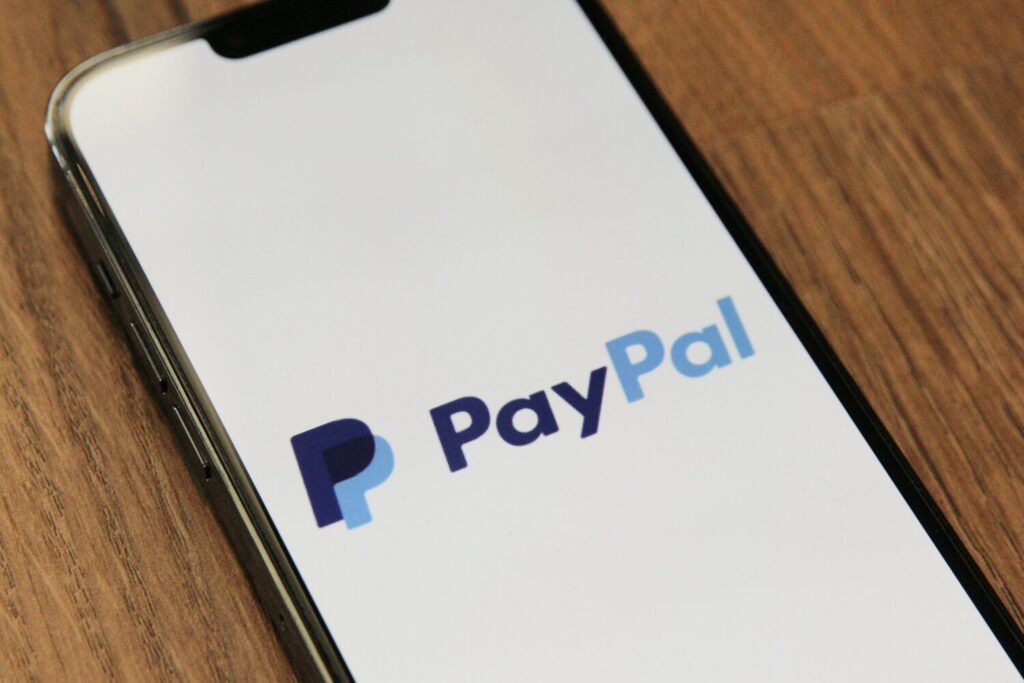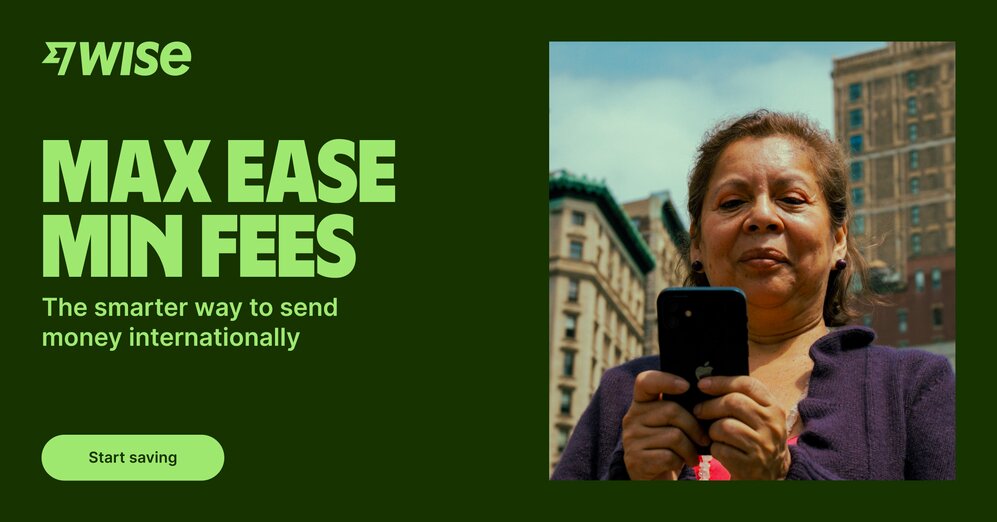
PayPal Review 2025 – Is It the Best Multi-Currency Account for You?
One of the world’s most famous digital payment platforms, PayPal has a host of multi-currency capabilities that millions of users take advantage of every day around the world. With its seamless integration across e-commerce platforms and reputation for user-friendliness, PayPal continues to be a go-to solution for those who need to manage multiple currencies. Its strength lies in its widespread acceptance, robust buyer protection, and the ability to hold and convert various currencies, including cryptocurrencies, within a single account. PayPal offers features that suit the needs of many – from a freelancer who receives payments from international clients, an online business owner that ships products worldwide, or a frequent traveler who needs to manage expenses across borders. Is PayPal the best option for managing multiple currencies? Let’s take a deep dive into its features, fees, pros, and cons.
Overview: What Is PayPal?
Founded in 1998 and originally known as Confinity, PayPal was acquired by eBay in 2002 before becoming an independent company again in 2015. Today, PayPal Holdings Inc. is a publicly traded company with a huge market presence. It currently serves over 400 million active accounts worldwide!
PayPal operates primarily as a digital payment processor and electronic wallet that allows users to make online transfers without sharing financial information. It links your bank account or credit card to facilitate payments and money transfers online.
PayPal allows users to send money using just an email address, receives payments from customers worldwide, and converts between supported currencies. Users can either transfer funds to their bank accounts or keep them in their PayPal balance for future transactions.
PayPal is best suited for online shoppers, e-commerce businesses, freelancers looking for international clients, and casual users needing occasional cross-border transfers, though it’s less optimized for frequent high-volume currency exchanges.
Key Features of PayPal
Multi-Currency Support – PayPal supports holding balances in up to 25 currencies, including major ones like USD, EUR, GBP, CAD, AUD, and JPY. This allows users to receive and hold money in multiple currencies without immediate conversion.
Exchange Rates & Fees – PayPal typically doesn’t offer the mid-market rate for currency conversions. Instead, it applies a markup of approximately 3-4% above the base exchange rate, which is higher than some dedicated multi-currency competitors.
International Transfers – Transfers between PayPal accounts are typically instant regardless of country. PayPal operates in more than 200 countries with varying withdrawal options depending on location. Transfer limits depend on account verification status and history.
Account Management – PayPal offers both web-based and mobile app interfaces that are intuitive and user-friendly. Its mobile app provides comprehensive functionality, including sending money, checking balances, and managing recurring payments. Customer support is available through email, phone, and a resolution center, though response times can vary.
Security & Regulation – PayPal employs end-to-end encryption and fraud monitoring systems. It’s regulated in the US by the Financial Crimes Enforcement Network and holds appropriate licenses in other jurisdictions where it operates. The platform offers buyer and seller protection policies that can help mediate disputes and protect against unauthorized transactions.
Business Tools – For merchants and business users, PayPal offers additional features like customizable checkout solutions, recurring billing options, and integration with major e-commerce platforms. The PayPal Business app allows merchants to track sales, send invoices, and manage their business finances on the go.
PayPal Credit – In some markets, PayPal offers credit solutions that allow users to make purchases and pay over time, providing flexible payment options for larger transactions.
Crypto – PayPal allows users in select countries to buy, sell, and hold popular cryptocurrencies directly within their PayPal accounts. Eligible users in the U.S. and a few other regions can transfer crypto to and from external wallets including exchanges and hardware wallets. Crypto purchases are subject to transaction fees and margin spreads, and users cannot use cryptocurrency directly for payments. Instead, PayPal converts crypto to fiat at the point of sale. PayPal also launched its own stablecoin, PayPal USD (PYUSD), in 2023, which aims to support faster digital payments and Web3 applications.
Fees & Costs
Account Fees – Standard PayPal accounts have no setup or monthly maintenance fees. Business accounts also have no monthly fees unless you opt for the PayPal Payments Pro plan, which costs $30/month.
Currency Conversion Fees – PayPal’s currency conversion fee typically ranges from 3-4% above the base exchange rate, which is higher than specialized foreign exchange services like Wise (formerly TransferWise) that charge around 0.5-1%.
Withdrawal & Deposit Fees – Transferring PayPal balance to a linked bank account is usually free for standard transfers (takes 1-3 business days in most countries). Instant transfers to eligible banks and debit cards incur a 1% fee (max $10 in the US). ATM withdrawals with the PayPal Cash Card have a $2.50 domestic fee plus any fees the ATM owner charges.
Transaction Fees – Receiving personal payments from friends or family in your country is typically free when funded by PayPal balance or bank account. For commercial transactions, PayPal charges merchants 2.9% + fixed fee (varies by currency) for domestic transactions, and 4.4% + fixed fee for international transactions.
Hidden Costs – Be aware of potential inactivity fees in some regions after 12 months of no activity, cross-border fees added to base merchant rates, and currency conversion being automatically applied if you don’t manually select to be charged in the original currency during purchases.
Chargeback Fees – Merchants should note that PayPal charges a fee for buyer chargebacks, typically around $20 in the US (varies by country), which is not refunded even if the dispute is resolved in the seller’s favor.
Micropayment Rates – For businesses processing numerous small transactions (typically under $10), PayPal offers alternative micropayment rates that may be more cost-effective than standard commercial rates.
Pros & Cons
| Pros | Cons |
| Widely accepted worldwide | Higher currency conversion fees than specialists |
| Strong buyer and seller protection | Not available in some countries |
| Easy integration with e-commerce platforms | Withdrawal options limited in certain regions |
| No monthly account fees | Account freezes can occur during security reviews |
| Instant transfers between PayPal users | Customer service response time varies |
| User-friendly mobile app | Not optimized for large transfers |
| Multiple currency balances available | Some currencies not supported |
| Purchase protection for online shopping | Seller fees can be higher than some competitors |
| Integration with major shopping carts | Limited interest on balance compared to neobanks |
How to Open an Account
Opening a PayPal account is straightforward:
- Visit PayPal.com or download the mobile app and select “Sign Up”
- Choose between a Personal or Business account
- Enter your email address, create a password, and provide basic personal information
- Link a payment method (credit/debit card or bank account)
- Verify your email address by clicking the link sent to your inbox
For full functionality, you’ll need to complete identity verification by providing your tax identification number, date of birth, and potentially submitting a photo ID and proof of address depending on your location.
Most accounts can be created instantly, though full verification might take 2-3 business days. In some countries, verification requirements may be more extensive, potentially extending this timeline.
Business accounts may require additional documentation, such as business registration information, depending on your location and the nature of your business. This enhanced verification ensures compliance with local regulations and helps establish trust in the PayPal ecosystem.
Who Should Use PayPal?
PayPal is ideal for:
- E-commerce businesses selling products internationally
- Freelancers and contractors accepting payments from global clients
- Online shoppers who prioritize purchase protection
- Casual users who need to send money to friends and family abroad occasionally
- Small business owners who want an easy payment solution without complex banking setup
- Digital content creators monetizing their work across different markets
- Marketplace sellers on platforms like eBay, Etsy, and other online marketplaces
If you run an Etsy shop with customers from multiple countries, PayPal allows you to receive payments without requiring international bank details for each market. Similarly, if you’re a graphic designer working with clients in different regions, PayPal simplifies receiving payments regardless of where your clients are based.
However, if you’re primarily focused on holding large balances in multiple currencies or frequently converting between currencies, dedicated multi-currency accounts might offer better rates.
Competitor Comparison
When compared to other multi-currency platforms, PayPal shows both strengths and weaknesses:
Wise offers significantly better exchange rates (typically 0.5-1% above mid-market) compared to PayPal’s 3-4% markup. Wise also provides actual bank details in multiple currencies, while PayPal only offers a digital wallet experience. However, PayPal has wider global acceptance for online shopping.
Revolut offers more competitive exchange rates on weekdays and more sophisticated budgeting tools but has more limited customer support and isn’t as widely accepted by merchants as PayPal.
Payoneer is better optimized for freelancers and marketplace sellers with better integration with platforms like Upwork and Amazon, while PayPal excels in consumer protection and ease of use.
OFX specializes in large currency transfers with better rates for high-value transactions, while PayPal is more convenient for smaller, frequent transfers and online shopping.
Stripe offers more developer-friendly tools and customization options for businesses with technical resources, whereas PayPal provides simpler setup and broader consumer recognition.
While PayPal charges higher conversion fees, its main advantage remains its ubiquity and integration across the internet, which makes it easier to use for everyday transactions.
Conclusion: Is PayPal Worth It?
PayPal excels as a convenient, secure payment platform with basic multi-currency functionality. Its greatest strengths are its universal acceptance, strong buyer protection, and ease of use. The ability to hold multiple currency balances makes it useful for anyone receiving international payments.
However, its relatively high currency conversion fees make it less ideal as a primary multi-currency account if your main goal is cost-effective currency exchange. If you need to frequently convert large amounts between currencies, a dedicated service like Wise or OFX would likely save you money. If you value convenience, widespread acceptance, and strong purchase protection over obtaining the absolute best exchange rates, then PayPal remains a solid choice.
For businesses, PayPal’s ecosystem includes invoicing tools, inventory management options, and marketing solutions that can help streamline operations. The brand recognition alone often increases conversion rates for merchants, as customers tend to trust the familiar PayPal checkout option.
Thinking of signing up? Take a moment to compare PayPal’s fee structure with alternatives based on your specific needs before deciding which platform will work best for your particular situation.








Responses